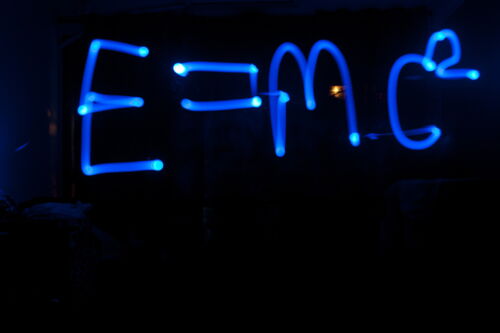Blog

Opus buyout offer: Blind side hit
December 10, 2019
Neither are we too familiar with the potential business case nor do we want to speculate about the motives – and it has happened before that a CEO of a listed company, backed by a financing partner, has placed a buyout bid for his employer.
Still, both the timing and the circumstances of the “Ograi” offer for Opus Group AB feel a bit strange – but that’s not our key point.
More interesting are the thoughts and arguments in favor of the deal that Magnus Greko, the influential founder of Opus, shares on the “ograioffer.com”-website:
“(…) Considering the transformation that is taking place in the automotive industry, I clearly see the need for a long-term partner providing the financial resources needed to make the required investments. In particular, the increased penetration of battery electric vehicles, which do not require emissions testing in our core U.S. market and the current U.S. administration’s focus on de-regulation will require Opus to continue to invest in new business areas.”
Or, in other words: Statutory Vehicle Inspection, and in particular emissions testing, are set for decline. We need massive investments into a new business model, and because the next years could be unpleasant from a financial point of view, we’d rather like to take the company private in order to manage the transformation without stock market pressure.
In contrast to that, other TIC players, especially the Germans such as DEKRA or TÜV Rheinland, happily continue investing into the traditional SVI/PTI business model (cp. e.g. TÜV Rheinland’s acquisition of Certio this fall). Maybe time to re-think this strategy, to say the least.
Link to “Ograi offer”-website: https://www.ograioffer.com/en

Augmented Reality: Visions of the future
October 28, 2019
Even three years after the hype, Pokémon Go still serves as the best example when having to explain what is meant by “Augmented Reality”. The videogame, built on a clever blending of real-life geocaching and hunting virtual creatures “hidden behind the visible”, was the first AR application with a broader appeal. And, some would say, so far the only one.
Since then, the videogaming hype may have ebbed, but professional use of the technology has gained traction. Several TIC players such as SGS, Bureau Veritas, UL, Lloyd’s Register and ABS have adopted or have started experimenting with AR tools and solutions – most prominently SGS with its “QiiQ” rebranded version of Librestream. Reason enough for us to head to Munich and visit Augmented World Expo Europe 2019 10 days ago, in order to take a first-hand look at the technology and to assess its viability for TIC.
Our main takeaways:
- Specialized hands-free glasses and headset can be used for Augmented Reality, but they are no longer necessary. Thanks to the massive boost in computing power of modern smartphones and tablets, AR applications run comfortably and smoothly on these, significantly reducing the hardware cost.
- Clearly, Augmented Reality is a fascinating technology especially for manufacturing, assembly and maintenance. The possibility to show exactly where cables are to be mounted or where holes have to be drilled, based on precise 3D CAD models, generates a huge opportunity for quality improvement, as e.g. shown by Boeing.
- For TIC though, due to its variety of settings and its “non-invasive” inspections, this very feature seems to be less relevant or useful.
- Therefore, current AR software development mismatches the need of the TIC industry – albeit for very good reasons from developers’ point of view.
- However, almost all AR suites feature some sort of remote collaboration and assistance feature. That is very useful in TIC as well and probably the reason why most TIC AR deployments focus on this function, for the time being.
- Still, much bigger potential for TIC seems to lie in automation of workflows and of reporting, and in know-how sharing and preservation, considering how dramatically some TIC players’ workforces are ageing.
- For AR to create further value for TIC, and to generate tangible competitive advantage, considerable additional development efforts and especially intelligent customizing will be needed.
- Leaving this to AR software providers will hardly work, as they seem to struggle with fully understanding the requirements – not surprising given the idiosyncrasy of TIC.
Customized, in part proprietary AR tools will make the difference in TIC, not deployments of standard software solutions, because the latter are intended for (significantly) different use cases in manufacturing industries.
And: successful adoption of AR for TIC is not going to be a “homerun on autopilot”. Therefore, it is sensible to, at least, start seriously experimenting with the technology now – in order to avoid missing the bus.
Image copyright: Carsten Röcker

The „Digital Challenge“ for TIC: Applied relativity
October 14, 2019
Albert Einstein’s Theory of Relativity contains many astounding and bewildering concepts. One of them is the idea that time is relative and depends on the speed of an object’s movement. In consequence, even though it subjectively may seem that the same amount of time has passed, objectively there can be huge discrepancies.
In our last blog post, and in similar vein several times before, we have talked about the mysterious “Digital Challenge” for the TIC industry. In order to avoid the impression of unsubstantiated scaremongering, let us take a look at two examples what this means in practice. We’ll come to the connection to Einstein’s great theory later.
Our first example for the “Digital Challenge” is the TISAX case. TISAX (Trusted Information Security Assessment Exchange), a proprietary standard for Information Security, secure data handling and data exchange was defined by the German Automotive industry association VDA based on ISO 27001.
Most German Automotive OEMs and major suppliers now require their business partners to be TISAX-certified, rendering this into a must-have for most active in that industry. A typical certification service in nature, and moreover and pleasantly “something digital”.
However, three of the “Big 4” managed to get accredited by the newly-formed accreditation body ENX before most of the TIC players – cp. http://www.enx.com/tisax/tisax-home.html. In other words: they recognized the business potential and relevance quicker and moved faster even though being TIC outsiders, winning a good part of the market.
This does not cast a too positive light on the (German) TIC industry’s ability to develop (slightly) digital business models. If key players only manage to move at a snail’s pace on their very hometurf and leave a new business very adjacent to their current offering to new contenders, what are their chances of success in less familiar and more sophisticated new services?
It can be expected that A&A players will continue this strategy and pursue similar “digital” certification opportunities in other industries – PwC and Deloitte have set up dedicated legal entities for such “Certification Services”.
The second example for the “Digital Challenge” is the sheer speed and force at which other new contenders e.g. from the professional services space expand in Cybersecurity and related services. To us, Accenture is probably the best example and one of the most determined players to this end.
In the last twelve months, Accenture has acquired or invested into 13 players in Cybersecurity, Software and Digital Services:
- Pragsis Technologies, Spain (Big Data)
- Fairway Technologies, USA (Software development)
- Analytics 8 LP, Australia (Big Data)
- BCT Solutions, Australia (Cybersecurity)
- Deja vu Security, USA (Cybersecurity)
- Cirruseo, France (Google cloud solutions)
- Vlocity, USA (Cloud software, Series C)
- Knowledgent Group Inc., USA (Data engineering and management)
- PrimeQ Pty Ltd, Australia (Oracle Cloud solutions)
- Intrigo Systems, USA (SAP cloud solutions)
- DAZ Systems, USA (Oracle Enterprise Software)
- MaLong Technologies, China (AI-based product recognition, Series B)
- Pillar Technology Group, USA (Software testing)
In contrast to that, in the last twelve months, the 13 largest TIC players have made a whopping zero acquisitions in the field (at least to our knowledge; the last deals we noted were NTA/Intertek and InSite/Eurofins, both in June 2018).
To be fair, several TIC players such as SGS, UL, DNV-GL, Eurofins, Intertek or TÜV Süd have invested (in some cases substantial) organic efforts into Cybersecurity and Digital – with new labs, alliances and partnerships, new services and digitization of processes. But that will hardly be enough to keep up with such a pace of expansion.
A certain pattern can be observed along these and other examples: While some TIC players apparently still need to fully comprehend the “Digital Challenge” and develop strategies for dealing with it, those who have realized what is going on struggle with being rigorous and fast enough in execution. In other words: Too little, too late.
Coming back to Einstein: Even though the TIC industry may feel that its efforts are substantial and well-timed, the rest of the world may come to a different conclusion – because both spheres are travelling at different velocities.
If the TIC industry does not “up its game” and starts playing at “digital speed”, others will prevail in “Digital TIC”. This would limit the industry to its existing businesses and services, which will increasingly be substituted by digital TIC offerings – effectively locking (most of) the industry into a shrinking market.
In that case, sooner or later fierce “dog-eat-dog”-style infighting for the remnants of contracting legacy businesses will begin, with the stronger players grabbing market shares from the weaker ones that eventually go out of business.
In a certain way, that will then be the long-awaited further consolidation of the TIC industry – only quite differently than expected and hoped-for.